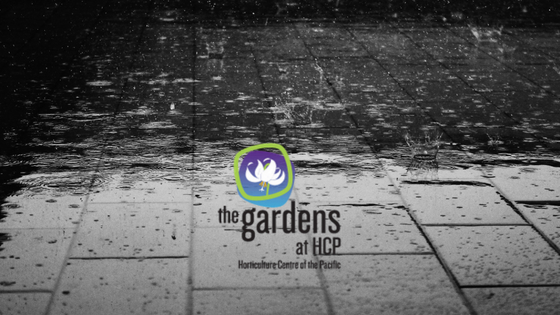Rainwater Management
The latest blog post from our Pacific Horticulture College Students.
Rainwater Management – Skye Koch and Maddie Harris
The PHC class took an introduction class to Backyard Rainwater Management with Jess Bossert of Tempest Rainwater Management Inc.
As drought becomes more significant worldwide, we as a collective must find more sustainable ways to use our resources. Water should be a first priority. Rainwater harvesting is the residential or commercial collection of rainwater using roof run and gutter systems and other collection methods. The purpose is to collect excess water into storage cisterns instead of losing useful water to storms drains. By collecting rainwater, we avoid flooding, erosion of our soils and reduce our impact on local wildlife habitats. With a rainwater collection system, it is possible to significantly decrease household water bills and keep your gardens and lawns green year-round.
The province of B.C and individual municipalities have codes and regulations to follow in order to set up a rainwater catchment system. Water collected in these cisterns typically are used for non-potable purposes. For liability reasons, there are many restrictions in place regarding citizens' use of rainwater for drinking purposes or direct skin contact (showers, washing machines). There are two main uses for rainwater collection: toilet water and irrigation. It is simpler and more cost effective to incorporate a rainwater management system while constructing a new building rather than re-design a current dwelling, although possible. This cost limitation means many use rainwater collection for irrigation purposes.
The Greater Victoria area has plenty of water through October to March followed by a much drier season from April to September. This can seem like a problem when it comes to rainwater harvesting: Victoria and the surrounding municipalities need large, possibly even multiple, connected catchment tanks to sustain our water needs though the dry summer months. Over the winter, large amounts of rainfall will easily fill storage cisterns in preparation for the dry season. For excess water situations, other opportunities may need to be explored (such as a rain garden).
The ideal time to install a rainwater management system is in the fall/early winter. It helps to calculate your water requirements and then provide space and time to collect the amount you need.
In the movement towards a more sustainable future, rainwater management is a key element. By using stored water, we decrease the energy that goes into sanitation treatment. By purposely directing any additional non-collected rainwater, we also allow nature to filter the water naturally. More people are starting to recognize the environmental impact and uses of rainwater management and are investing for the future. Some companies and schools have shown leadership by using a rainwater catchment systems on a commercial level. One example is the Mountain Equipment Co-op in downtown Victoria: they are storing water in a catchment system under the sidewalk and using it in combination with a two flush system to reduce their water use by 48%. In a time when drought is becoming more prevalent, rainwater management systems are a solid step towards a greener future.

